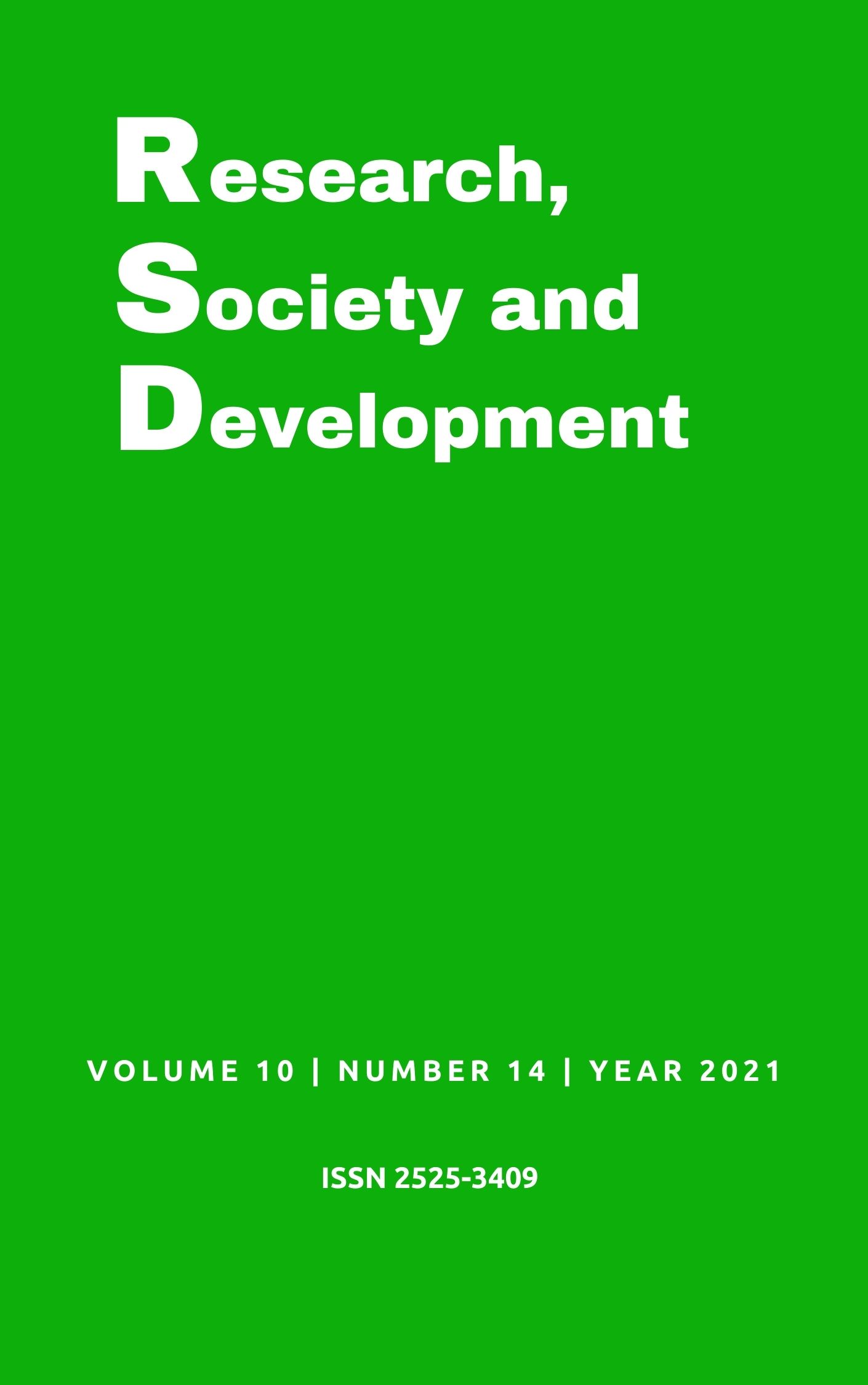Urinary tract infection in pregnant women: an integrative review
DOI:
https://doi.org/10.33448/rsd-v10i14.22168Keywords:
Urinary tract infection, Pregnancy, Bacterium.Abstract
Urinary tract infections (UTI) are considered the most frequent clinical complication in pregnancy, it arises due to a failure in the defense system against installed agents that can cause injuries of varying degrees for both the mother and the fetus. The present study points out the main microbiological agents, clinical classifications, complications arising and therapeutic approaches. An integrative literature review was carried out, using articles published between 2016 and 2021, in Portuguese, English and Spanish, which were published in full in the PubMed, SciELO and LILACS databases. UTIs in pregnancy are caused by hormonal, anatomical and physiological factors, these conditions promote the bacterial growth of this pathology. These infections are usually caused by bacteria from the intestinal microbiota that contaminate the urinary tract, with Escherichia coli standing out most predominantly in 80% of cases. For an effective treatment it is necessary to determine the bacteria causing the infection, to select the appropriate antibiotic. Therefore, to reduce and control cases of tract infections, prenatal consultations and early examinations to diagnose the infection should be carried out in order to prevent possible perinatal and maternal complications.
References
Belyayeva, M., & Jeong, J. M. (2021). Acute Pyelonephritis. In StatPearls. http://www.ncbi.nlm.nih.gov/pubmed/30137822
Coria, M. del P., Guzzetti, P., Suárez, M., Vigliarolo, L., Viegas Caetano, J. A., & Lopardo, H. (2018). Infecciones urinarias por Streptococcus agalactiae y Staphylococcus saprophyticus y embarazo. Acta Bioquím. Clín. Latinoam, 52(4), 423–428.
De Abreu Silva, R., Araújo de Sousa, T., & De Assis Vitorino, K. (2019). Infecção Do Trato Urinário Na Gestação: Diagnóstico E Tratamento. Revista Científica FAEMA, 10(1), 71–80. https://doi.org/10.31072/rcf.v10iedesp.765
Flores-Mireles, A., Hreha, T. N., & Hunstad, D. A. (2019). Pathophysiology, treatment, and prevention of catheter-associated urinary tract infection. Topics in Spinal Cord Injury Rehabilitation, 25(3), 228–240. https://doi.org/10.1310/sci2503-228
Geerlings, S. E. (2016). Clinical presentations and epidemiology of urinary tract infections. Urinary Tract Infections: Molecular Pathogenesis and Clinical Management, 27–40. https://doi.org/10.1128/9781555817404.ch2
Gupta, K., Grigoryan, L., & Trautner, B. (2017). In the clinic® urinary tract infection. Annals of Internal Medicine, 167(7), ITC49–ITC64. https://doi.org/10.7326/AITC201710030
Habak, P. J., & Griggs, Jr, R. P. (2021). Urinary Tract Infection In Pregnancy. In StatPearls. http://www.ncbi.nlm.nih.gov/pubmed/30725732
Haddad, J. M., & Fernandes, D. A. O. (2018). Infecção Do Trato. Femina, 47(4), 241–244. https://www.febrasgo.
Kalinderi, K., Delkos, D., Kalinderis, M., Athanasiadis, A., & Kalogiannidis, I. (2018). Urinary tract infection during pregnancy: current concepts on a common multifaceted problem. Journal of Obstetrics and Gynaecology, 38(4), 448–453. https://doi.org/10.1080/01443615.2017.1370579
Lee, D. S., Lee, S. J., Choe, H. S., & Giacobbe, D. R. (2018). Community-Acquired Urinary Tract Infection by Escherichia coli in the Era of Antibiotic Resistance. BioMed Research International, 2018. https://doi.org/10.1155/2018/7656752
Li, R., & Leslie, S. W. (2021). Cystitis. In StatPearls. http://www.ncbi.nlm.nih.gov/pubmed/29494042
Marcon, J., Stief, C. G., & Magistro, G. (2017). Harnwegsinfektionen. Der Internist, 58(12), 1242–1249. https://doi.org/10.1007/s00108-017-0340-y
McLellan, L. K., & Hunstad, D. A. (2016). Urinary Tract Infection: Pathogenesis and Outlook. Trends in Molecular Medicine, 22(11), 946–957. https://doi.org/10.1016/j.molmed.2016.09.003
Nteziyaremye, J., Iramiot, S. J., Nekaka, R., Musaba, M. W., Wandabwa, J., Kisegerwa, E., & Kiondo, P. (2020). Asymptomatic bacteriuria among pregnant women attending antenatal care at Mbale Hospital, Eastern Uganda. PLoS ONE, 15(3), 1–12. https://doi.org/10.1371/journal.pone.0230523
Pereira, A., Shitsuka, D., Parreira, F., & Shitsuka, R. (2018). Método Qualitativo, Quantitativo ou Quali-Quanti. In Metodologia da Pesquisa Científica. https://repositorio.ufsm.br/bitstream/handle/1/15824/Lic_Computacao_Metodologia-Pesquisa-Cientifica.pdf?sequence=1. Acesso em: 28 março 2020.
Sabih, A., & Leslie, S. W. (2021). Complicated Urinary Tract Infections. In StatPearls. http://www.ncbi.nlm.nih.gov/pubmed/28613784
Santos, C. C., Madeira, H. S., Silva, C. M. da, Teixeira, J. J. V., & Peder, L. D. de. (2019). Prevalência de infecções urinárias e do trato genital em gestantes atendidas em Unidades Básicas de Saúde. Revista de Ciências Médicas, 27(3), 101. https://doi.org/10.24220/2318-0897v27n3a4115
Santos Filho, O. O., & Telini, A. H. S. (2018). Infecções do trato urinário durante a gravidez. Federação Brasileira Das Associações de Ginecologia e Obstetrícia (FEBRASGO), 87, 24.
Veiga, S. P. da, BOEIRA, V. L., SILVA, C. M. da, & PEDER, L. D. de. (2017). Incidência De Infecções Do Trato Urinário Em Gestantes E Correlação Com O Tempo De Duração Da Gestação. Acta Biomédica Brasiliensia, 8(1), 95. https://doi.org/10.18571/acbm.125
Wingert, A., Pillay, J., Sebastianski, M., Gates, M., Featherstone, R., Shave, K., Vandermeer, B., & Hartling, L. (2019). Asymptomatic bacteriuria in pregnancy: systematic reviews of screening and treatment effectiveness and patient preferences. BMJ Open, 9(3), e021347. https://doi.org/10.1136/bmjopen-2017-021347
Young, A., Toncar, A., & Wray, A. A. (2021). Urethritis. In StatPearls. https://pubmed.ncbi.nlm.nih.gov/30725967/
Downloads
Published
Issue
Section
License
Copyright (c) 2021 Larissa Botelho da Silva; Pâmella Grasielle Vital Dias de Souza

This work is licensed under a Creative Commons Attribution 4.0 International License.
Authors who publish with this journal agree to the following terms:
1) Authors retain copyright and grant the journal right of first publication with the work simultaneously licensed under a Creative Commons Attribution License that allows others to share the work with an acknowledgement of the work's authorship and initial publication in this journal.
2) Authors are able to enter into separate, additional contractual arrangements for the non-exclusive distribution of the journal's published version of the work (e.g., post it to an institutional repository or publish it in a book), with an acknowledgement of its initial publication in this journal.
3) Authors are permitted and encouraged to post their work online (e.g., in institutional repositories or on their website) prior to and during the submission process, as it can lead to productive exchanges, as well as earlier and greater citation of published work.


